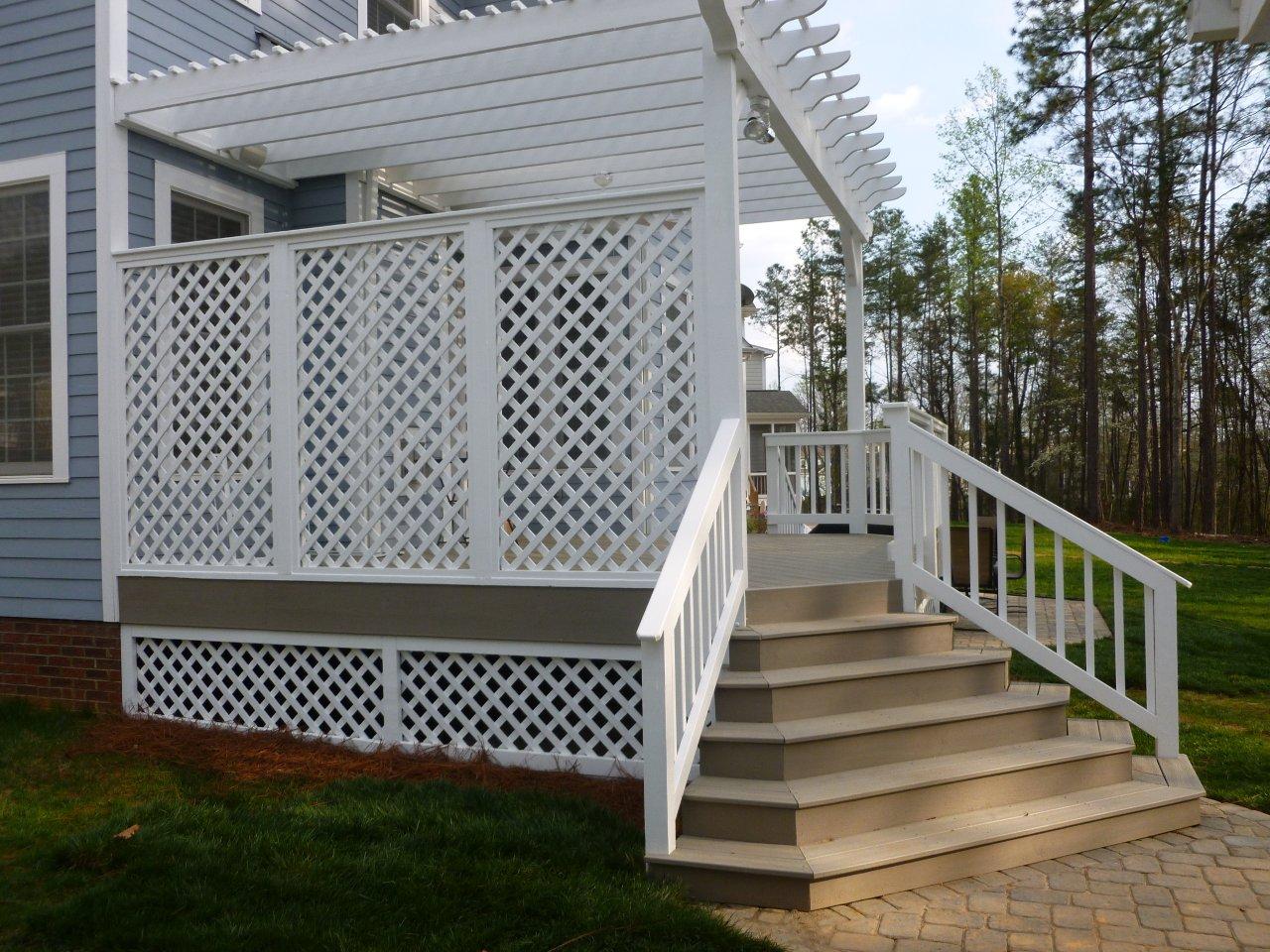
Note, also, that if you don’t use protectants, the color of your cedar will change to a soft grey over time.Ĭons: The main issue is the price, averaging at about $3.75 to $5 per square foot. It contains tannins and naturally occurring oils that make it resistant to rot and insects, but you can also treat it with a stain and sealer to prevent cracks or splinters. It’s also extremely lightweight, yet strong, making it ideal for places with inclement weather conditions. Cedarwood has a lovely natural hue and is widely available throughout the US. Pros: Most purists love cedar and redwood decks, particularly due to their gorgeous, rich color. Whimsical red and white striped fabric livens up the decking material in this backyard designed by Charlotte Lucas. Expect to spend about $4-$8 per square foot, according to. It's also a great nonslip surface when wet, making it particularly well-suited for rainy regions or backyards with swimming pools.Ĭons: Bluestone can get uncomfortably hot when the sun is beating down on it in travertine is a cool-to-the-touch stone alternative. Pros: Bluestone is rich color in color, it's organic, and it integrates well with traditional architecture. They can be on the pricier side depending on the company you pick-around $7 to $10 per square foot-and you have to make sure that you choose a reputed, high-quality company. This makes them a really durable option since they don’t require too much maintenance.Ĭons: They’re maintenance-free: Mold and mildew can grow in damp spaces, and since they’re partially wood, some composites may end up showing signs of decay. Since they’ve been artificially created, they won't warp or splinter, and they also don’t get affected by rot or insects. Pros: Composite decking materials are made primarily from wood fibers and recycled plastics, and are among the fastest-growing decking options available today. This isn’t too intense of a maintenance program to be sure, but you definitely need to remember it! (That might also be why it costs more than cedar: about $6 to $8 per square foot.)Ĭons: It’s also important to note that both redwood and cedar require an annual power washing, as well as a coat finish every three to four years. However, redwood isn’t as easily available, particularly in the eastern regions of the country. Pros: Redwood is another really nice natural option, and shares several characteristics with cedar wood-the natural tannins, lightweight yet strong finish, and gorgeous color. Local landscape architecture design studio Terremoto set this pool in aggregate seeded concrete decking. You can use concrete tiles or opt for a seamless polished concrete slab for a sleeker impression.Ĭons: Some may feel like it has less character than other options, and it can also get very hot in the sun. Pros: Versatile, practical, chic, and modern when well designed, concrete is a surprisingly good deck material option. It’s also important to know where your tropical hardwood comes from: Look for those from sustainably harvested sources. If you choose to not stain the deck, definitely apply a UV-blocking clear wood preservative every three to four years-since, like cedar and redwood, tropical hardwoods also weather to a silvery color when they’re not stained. They don’t really accept stains or finishes very well either, so if you’re determined to add one, make sure that it’s been especially formulated for tropical hardwood. Nicole FranzenĬons: Similar to redwood and cedar, they come with a pretty high price tag (around $8 to $12 per square foot), and are fairly dense, making it hard to drill holes into them. Papaya Playa Project, the resort in Tulum, Mexico pictured here, is the perfect place to look for decking design inspiration. A true luxury choice, tropical hardwoods are grainy, hard, and durable, as well as naturally resistant to issues like rotting and insects. Pros: Tropical hardwoods are everywhere: ipe, cumaru, and tigerwood, just to name a few. Now, though, it’s treated with less toxic chemicals, making it relatively safe for the home. In the past, pressure-treated wood was treated with chromate copper arsenate, a suspected carcinogen.

#CEDAR LATTICE PORCH CRACK#
It’s available pretty much everywhere, and easy to fasten.Ĭons: Maintenance is definitely an issue with this kind of decking material-it has the tendency to crack or warp over time. Since the wood has been chemically treated to withstand rot, mold, and insects, people tend to gravitate toward it for longevity-and its low price point ($1.50 to $2.50 per square foot) doesn’t hurt either. Pros: This is by far the most popular option today, as it is used on almost 75 percent of all new decks. It’s a dense hardwood known for its durability. Designer Barrie Benson opted for Brazillian Ipe on this deck.


 0 kommentar(er)
0 kommentar(er)
